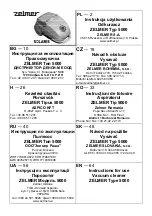
3
Robot settings
3-2
2. Adjusting the origin
This section describes only the origin adjustment points that are different from the standard models.
For details about other explanations, see the Installation Manual for YK-XG series standard models.
Adjusting the origin of the YK250XGC(P), YK350XGC(P), YK400XGC(P), YK500XGLC(P), or YK600XGLC(P)
■
• Since the joints of the X-, Y-, and R-axis are covered, it is difficult to understand the clearance between the sensor and
dog. After the return-to-origin has performed in the same manner as the standard model, carefully adjust the machine
reference so that the origin does not deviate even when you touch the arm, etc. accidentally during work.
After the machine reference has been adjusted, turn the joint to check that the sensor does not collide with the dog.
• Since the joints are covered, the origin positions of the X-axis and Y-axis cannot be changed.
• The R-axis sensor uses a compact sensor. So, carefully check that the tightening torque of the hex nut is as small as
1Nm (10kgfcm). If tightened to a torque larger than this level, the sensor may break.
R-axis origin sensor and hex nut
R-axis origin sensor
Hex nut
23301-HM-00
Содержание YK250XGC
Страница 2: ......
Страница 6: ......
Страница 8: ......
Страница 34: ......
Страница 35: ...Contents Before using the robot Be sure to read the following notes i Introduction iii Introduction ...
Страница 36: ......
Страница 40: ......
Страница 42: ......
Страница 46: ......
Страница 48: ......
Страница 70: ......
Страница 72: ......
Страница 77: ...Chapter 4 Periodic inspecition Contents 1 List of inspection items 4 1 ...
Страница 78: ......
Страница 82: ......
Страница 95: ......
















































